This reverse seared ribeye starts off low and slow in the oven, then finishes on a searing hot skillet. Give this method a try and see why steak connoisseurs swear by it!
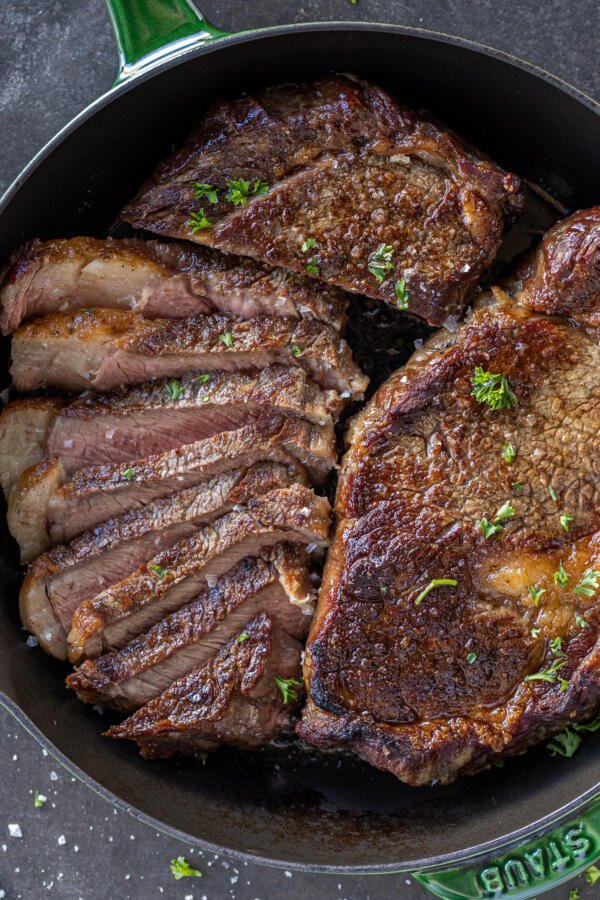
Did you know? Thanks to the low-heat cooking method, there’s no need to rest a reverse seared steak before cutting in!
What Is the Reverse Sear Method?
Reverse searing is a method that involves cooking the steak in a low-temp oven first, then finishing it off with a high-temp sear on the stovetop. This method is ideal for thicker steaks (at least 1.5-2 inches thick) because it allows for more control over the internal temperature. Also, the lower oven temperature and longer cooking time activates enzymes in the meat that help break down muscle proteins, resulting in more tender steak.
Reverse Sear a Steak Video
How To Reverse Sear a Steak
Although the name sounds fancy, a reverse seared steak is mind-blowingly simple to make. Season the steaks, cook them in the oven for about 30 minutes, then sear them on a skillet!
- Season the steaks: Preheat the oven to 250°F. Season the steaks on both sides with salt and pepper.
- Bake the steaks: Place the steaks on a wire rack set over a lined baking sheet. Bake for 30-45 minutes, or until the steaks reaches 100F internal temperature.
- Sear the steaks: Preheat an oiled cast iron skillet on the stovetop over high heat. As soon as the steaks come out of the oven, transfer them to the hot skillet and sear on both sides for about a minute.
Hot tip: Add mouthwatering flavor by basting the steak with a couple tablespoons of butter, garlic cloves, and fresh rosemary in the skillet.
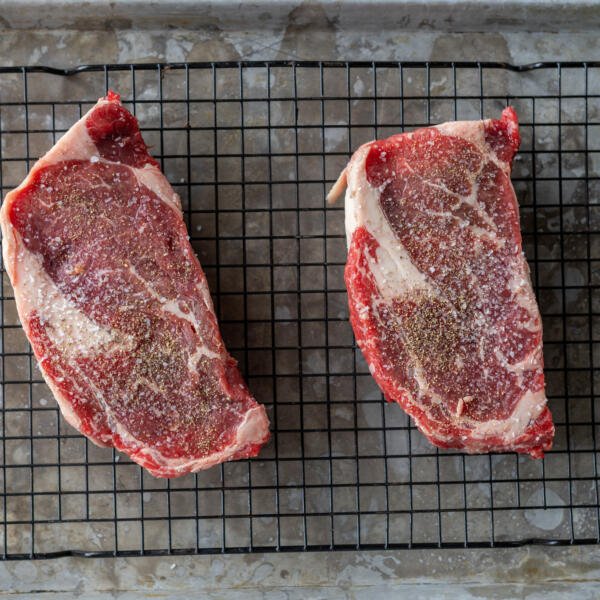
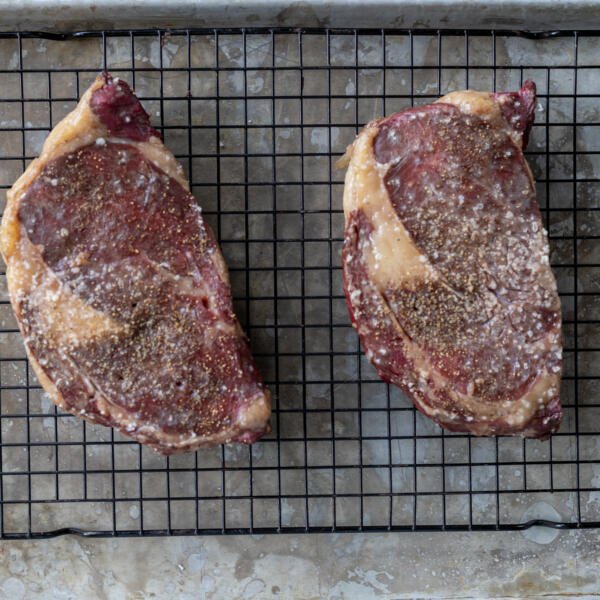

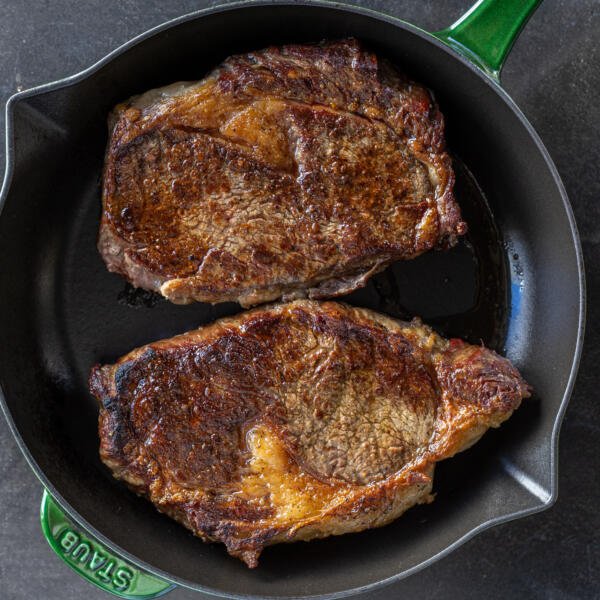
Best Steaks for Reverse Searing
The ideal steak for reverse searing is thick, meaty, and marbled. Let’s look at a few favorite cuts on the menu.
- Ribeye: Can anything beat the exceptional marbling and buttery texture of a ribeye? This steak is on the higher end of the pricing spectrum, but it’s worth every penny. Opt for a tomahawk steak to wow a crowd!
- Filet mignon: Filet mignon has a melt-in-your-mouth texture and delicate flavor. It’s usually about two inches thick, making it a perfect choice for reverse searing.
- Porterhouse: A porterhouse is composed of strip steak and tenderloin separated by a bone. This cut is thick, tender, and incredibly flavorful.
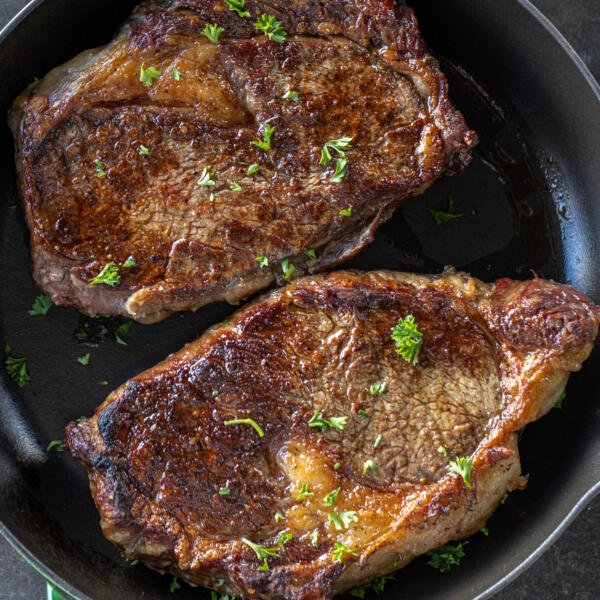
Steak Doneness Guide
We don’t know all the chemistry behind cooking steak, but one thing is certain — the delicious transformation is magical. Here’s a guide to simplify the levels of doneness and help you achieve perfectly cooked steak.
- Rare (120°F): Cool red center and ultra-tender
- Medium-rare (130°F): Warm red center and juicy
- Medium (145°F): Hot pink center
- Medium-well (150°F): Mostly brown and firmer
- Well done (155°F): Fully brown and firm
Hot tip: The internal temperature of the steaks will continue to rise, so take them out of the pan 5-10 degrees shy of your preferred degree of doneness.
Tips From the Kitchen
Is your mouth watering at the thought of a juicy and tender steak? Follow these five tips for a steakhouse-quality reverse seared ribeye!
- Keep the seasoning simple. Although it may seem counterintuitive, a quality steak tastes better with minimal seasoning. Add a generous amount of salt and pepper, but don’t go overboard with seasoning blends.
- Cook the steaks on a wire rack. The dryer the surface of the steaks are, the quicker they’ll sear. Place the steaks on a wire rack set over a lined baking sheet for even crisping in the oven.
- Check the internal temperature. Ensure the steaks are cooked to your desired degree of doneness with a thermometer. A leave-in oven thermometer is ideal because it allows you to set the preferred temp and leave the oven door closed. Or, check in periodically with an instant-read meat thermometer.
- Use a cast iron skillet. A good quality cast iron skillet like this one is a meat-searing staple. It retains heat extremely well and cooks the steaks evenly. Plus, cast iron doesn’t leach any chemicals into your food!
- Preheat the skillet properly. The pan should be blazing hot to give the steaks a golden brown crust without overcooking the inside.
Ways To Serve
Just like any steak, this reverse seared ribeye makes for a delicious dinner. Serve it hot with a pat of garlic herb butter or chimichurri, then bring out the carbs. There’s no better pairing than mashed potatoes and the perfect veggie side dish or asparagus, but you can’t go wrong with a Caesar salad either. For another salad option, try a classic wedge salad. If you have enough leftovers for a second meal, I highly recommend trying this steak bruschetta – you won’t regret it
Hot tip: Do you have leftovers? Tuck them in a steak sandwich or steak quesadillas for a weekday pick-me-up.
Storage & Reheating
You know what leftover steak means… more ready-made protein for the days ahead! Keep your steak fresh and tasty with this guide.
- Storage: Store leftover cooked steak in an airtight container in the fridge for up to one week.
- Reheating: To reheat leftover steak and keep it juicy, wrap it in aluminum foil and heat it in the oven at 350°F until warmed through.
More Steak Recipes
- Grilled Ribeye Steak — Mouthwatering wood-fired flavor
- Oven-Baked Ribeye Steak — Broiled to golden-brown perfection
- Cast Iron Ribeye — Perfectly seared crust
- Air Fryer Steak Bites — Juicy beef with mushrooms
- London Broil — Marinate overnight for a delicious flank steak entrée!
Recipe
Ingredients
- 2 lbs ribeye steaks 1.5-2 inch thick
- 1 tbsp oil olive or avocado
- 2 tbsp salt adjust to preference
- 2 tsp ground black pepper adjust to preference
Instructions
- Preheat the oven to 250°F. Season the steaks generously with salt and pepper. Place them on a wire rack set on a lined baking sheet.
- Bake for about 30-45 minutes for medium doneness. Use a thermometer to check the internal temperature of the steak, it should read 100F.
- Just before the steaks come out of the oven, preheat an oiled cast iron skillet over high heat until the oil begins to smoke.
- Transfer the steaks into the cast iron skillet with tongs and sear each side until browned, and until it reaches your desired doneness. (keep in mind the temperature will continue to rise as they are resting)
- Let steak rest for 3-5 minutes before you cut into them. Enjoy
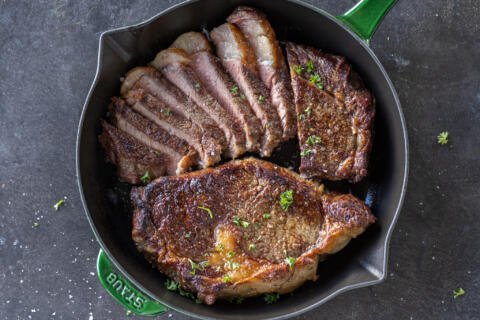
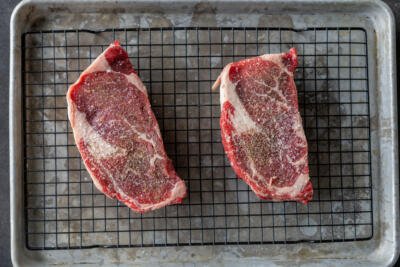

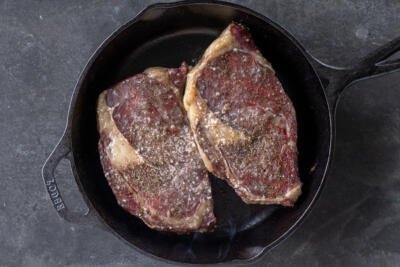

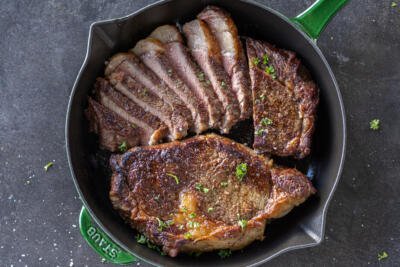

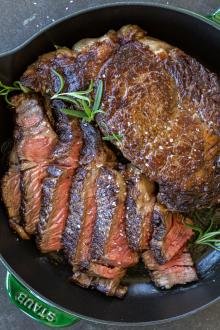

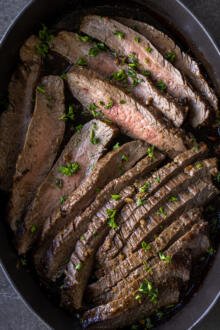
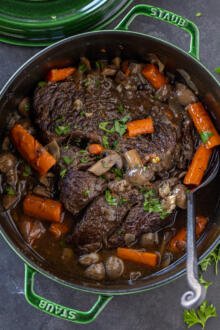

No Comments